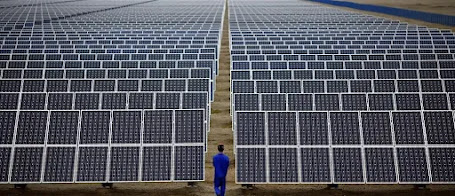Introduction
Solar energy systems have become known to shine a captivating sign of promise in an era characterized by rising awareness of the environment & a dire need to confront the effects of climate change. Those phenomenal supernatural events have revolutionized the method by which we develop power, creating an ecologically friendly, sustainable, & energy source with tremendous potential towards a more environmentally friendly future. In this essay, we will delve into the intriguing world of rooftop solar panels, covering its operation, upsides, or contribution to establishing future generations for generating electricity.
1- The Solar Panel Basics
Poly carbonate screens, sometimes referred to simply solar panels, are technologies which turn sunlight to electricity. They are built from an array of connected solar cells composed of semiconductors, most commonly silicone. Once sunshine reaches these solar cells, it activates the electrically charged particles from within, causing an electrical current to flow. Solar power systems are groundbreaking as a result of the instantaneous ability to transform sunshine into energy for electricity.
2- How Solar Panels Work
1- Absorption of Sunlight: Whenever experiencing natural sunlight, rooftop solar panels provide a coating of semiconductor raw material, ordinarily silicon, that eliminates photons that occur (light waves).
2- Excitation of Electrons: The ultraviolet rays that are consumed motivate radicals throughout the material comprising semiconductors, leaving them forth and crafting a current of electrical charge.
3- Electric Current Generation: Electrodes the fact that were indeed activated motion by conducting the semiconductor material, building a voltage source. The alternating current ultimately transforms into electricity that can be utilized
4- Inverter Conversion: A generator that convert the electricity that is generated direct current (DC) to a current known as alternating current , thereby rendering it in harmony with a conventional the electrical system & most electrical appliances.
3- Advantages of Solar Panels
1- Clean and Renewable Energy: Solar panels, a renewable energy source, harness the sun's energy without emitting greenhouse gases or pollutants, making them an environmentally friendly alternative.
2- Energy Independence: People could reduce their dependency on energy from fossil fuels & electrical power through mounting solar panels upon their residential properties or companies. It improves confidence in energy and flexibility.
3- Cost Savings: Solar panel assemblies can significantly reduce power bills, and a second generator can be integrated into the electricity infrastructure to provide additional capacity through internet metering frauds.
4- Low Maintenance: Solar panels, with their non-moving parts, require minimal maintenance, requiring only regular cleaning and occasional inspections for efficient operation.
5- Longevity: Most solar power plants typically have a 20-25 decade or even longer the lifespan, making them an investment that will last.
4- Challenges and Future Developments
Although solar energy systems give a few benefits, there are a few drawbacks to be aware of. The starting price of install can be essential, & efficiency of solar panels varies upon factors that involve the spot, job shadowing, & the climate. As the sun does not shine, storage options such as electrodes are usually required to maintain an adequate electricity supply. Still, maintained development and study in the solar sector will tackle those problems. Solar panel innovations have improved effectiveness but the decreasing expense of rooftop arrays has rendered them cheaper to a greater audience. Energy storage technologies are similarly gaining more appealing, rendering it easier to preserve more power for use for cloudy days or at nighttime.
Conclusion
Solar power stations are with no question a game changer in the field of renewable sources of energy. They serve as a renewable, environmentally friendly, & inexpensive type of energy that the ability of changing the electricity landscape. Renewable energies grow progressively accessible and affordable to individuals all over the world as developments in technology & economies of magnitude push up costs. Embracing such technology not only decreases our carbon footprint, but also takes us closer to an idyllic future in which clean energy is the norm, aiding in the fight against the effects of global warming and ensuring a healthier and more sustainable world for subsequent generations.





Comments
Post a Comment